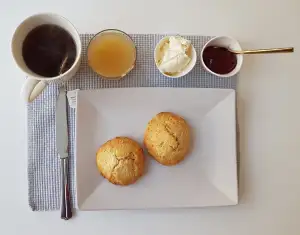Wholesome Delights: Mastering the Whole Grain Bread Recipe for Culinary Excellence

Whole grain bread is a nutritious and delicious option for those looking to incorporate more wholesome ingredients into their diet. Unlike refined white bread, which has had the bran and germ removed, whole grain bread contains all parts of the grain, making it rich in fiber, vitamins, and minerals. This article will guide you through the process of mastering the art of whole grain bread making, from understanding the importance of whole grains to serving suggestions and variations. Get ready to embark on a culinary journey that will elevate your baking skills and enhance your overall well-being.
Importance of Whole Grains in Bread Making
Whole grains play a crucial role in bread making, not only for their nutritional value but also for the unique texture and flavor they impart. Unlike refined grains, whole grains retain all parts of the grain, including the bran, germ, and endosperm. This means they are rich in fiber, vitamins, minerals, and antioxidants.
When incorporated into bread dough, whole grains add a hearty and nutty taste that elevates the overall flavor profile. They also contribute to a denser texture and improve the shelf life of the bread. The presence of fiber in whole grains helps regulate blood sugar levels and promotes digestive health.
Additionally, whole grains provide an array of essential nutrients such as iron, magnesium, and B vitamins. These nutrients support energy production, brain function, and immune system health. Including whole grains in your bread-making process ensures that you are creating a wholesome and nutritious final product.
By understanding the importance of whole grains in bread making, you can take your culinary skills to new heights by incorporating these nutritious ingredients into your recipes.
Ingredients for Whole Grain Bread Recipe
To create a delicious and wholesome whole grain bread, you will need the following ingredients:
- Whole wheat flour: Choose a high-quality whole wheat flour that is finely ground for the best texture in your bread.
- All-purpose flour: Adding a small amount of all-purpose flour helps to lighten the texture of the bread and improve its rise.
- Active dry yeast: This is essential for leavening the bread and creating those beautiful air pockets.
- Honey or maple syrup: These natural sweeteners add flavor and help activate the yeast.
- Salt: Just a pinch of salt enhances the overall taste of the bread.
- Olive oil or melted butter: Adding a small amount of fat helps to keep the bread moist and tender.
- Water: Use warm water to activate the yeast and bring all the ingredients together into a smooth dough.
- Optional additions: You can customize your whole grain bread by adding nuts, seeds, dried fruits, or herbs for extra flavor and texture.
By using these simple yet essential ingredients, you can create a wholesome and flavorful whole grain bread that will impress even the most discerning palates.
Step-by-Step Instructions for Making Whole Grain Bread
1. Start by combining warm water, yeast, and a pinch of sugar in a large mixing bowl. Let it sit for 5 minutes until the yeast becomes frothy.
2. In another bowl, mix together whole wheat flour, all-purpose flour, salt, and any additional grains or seeds you desire.
3. Slowly add the dry ingredients to the yeast mixture while stirring continuously until a sticky dough forms.
4. Knead the dough on a lightly floured surface for about 10 minutes until it becomes smooth and elastic.
5. Place the dough in a greased bowl, cover it with a clean kitchen towel, and let it rise in a warm place for about 1 hour or until doubled in size.
6. Once the dough has risen, punch it down gently to release any air bubbles. Shape it into a loaf by rolling it tightly from one end to another.
7. Place the shaped loaf into a greased bread pan and cover it again with the kitchen towel. Let it rise for another 30-45 minutes until it reaches just above the rim of the pan.
8. Preheat your oven to 375°F (190°C). Bake the bread for approximately 30-35 minutes or until golden brown and sounds hollow when tapped on top.
9. Remove the bread from the oven and let it cool completely on a wire rack before slicing.
Following these simple steps will ensure you achieve a delicious homemade whole grain bread that is both nutritious and satisfying!
Tips and Tricks for Perfect Whole Grain Bread
1. Use fresh ingredients: Freshly milled whole grain flour will yield the best results. Avoid using old or stale flour as it can affect the texture and taste of the bread.
2. Add vital wheat gluten: Whole grain flours have less gluten compared to refined flours, which can result in a denser bread. Adding vital wheat gluten will help improve the structure and rise of the bread.
3. Soak grains and seeds: If you're using whole grains or seeds in your recipe, soak them overnight before adding them to the dough. This will soften them and prevent them from absorbing too much moisture from the dough.
4. Optimal hydration: Whole grain flours absorb more liquid than refined flours, so adjust the amount of water accordingly. Start with a slightly higher hydration level and adjust as needed during mixing.
5. Longer rising time: Whole grain bread needs more time to rise compared to white bread. Allow for longer fermentation periods to develop flavor and improve texture.
6. Use a Dutch oven or baking stone: To achieve a crispy crust, bake your whole grain bread in a preheated Dutch oven or on a baking stone. This helps trap steam during baking, resulting in a beautiful crust.
7. Slash the dough: Before baking, make shallow slashes on top of the dough with a sharp knife or razor blade. This allows for controlled expansion during baking and prevents cracking on the surface.
8. Let it cool completely: Resist the temptation to slice into your freshly baked whole grain bread right away! Allow it to cool completely on a wire rack before cutting into it to ensure even texture and easier slicing.
By following these tips and tricks, you'll be well on your way to mastering the art of making perfect whole grain bread every time!
Health Benefits of Whole Grain Bread
Whole grain bread is not only delicious but also packed with numerous health benefits. Unlike refined grains, whole grains retain all parts of the grain, including the bran, germ, and endosperm. This means that whole grain bread is rich in fiber, vitamins, minerals, and antioxidants.
One of the key health benefits of whole grain bread is its high fiber content. Fiber aids in digestion and helps prevent constipation. It also promotes a feeling of fullness, which can aid in weight management. Additionally, the fiber in whole grain bread can help lower cholesterol levels and reduce the risk of heart disease.
Whole grain bread is also a great source of essential nutrients. It contains B vitamins such as thiamine, riboflavin, niacin, and folate, which are important for energy production and brain function. Minerals like iron, magnesium, and selenium are also found in whole grain bread and contribute to overall health.
Furthermore, the antioxidants present in whole grain bread help protect against chronic diseases such as cancer and cardiovascular disease. These antioxidants neutralize harmful free radicals in the body and reduce inflammation.
Incorporating whole grain bread into your diet can have a positive impact on your overall well-being. It provides sustained energy throughout the day and helps regulate blood sugar levels due to its low glycemic index. Whole grain bread is also beneficial for gut health as it supports a healthy microbiome.
By choosing whole grain bread over refined white bread or other processed options, you are making a conscious decision to prioritize your health. So why not start mastering the art of making wholesome whole grain bread today? Your taste buds and your body will thank you!
Serving Suggestions and Variations for Whole Grain Bread
Whole grain bread is incredibly versatile and can be enjoyed in various ways. Here are some serving suggestions and variations to enhance your whole grain bread experience:
- Toasted with butter or jam: Start your day right by toasting a slice of whole grain bread and spreading it with your favorite butter or jam.
- Sandwiches: Whole grain bread makes the perfect base for sandwiches. Load it up with fresh vegetables, lean meats, and flavorful spreads for a nutritious and satisfying meal.
- Bruschetta: Slice the whole grain bread into thick slices, toast them, and top with diced tomatoes, garlic, basil, and a drizzle of olive oil for a delicious bruschetta appetizer.
- French toast: Transform your whole grain bread into a decadent breakfast treat by dipping it in a mixture of beaten eggs, milk, cinnamon, and vanilla extract. Cook on a griddle until golden brown and serve with maple syrup.
- Croutons: Cut stale whole grain bread into small cubes, toss them in olive oil, salt, and your favorite herbs, then bake until crispy. Sprinkle these homemade croutons over salads or soups for added crunch.
- Bread pudding: Use leftover whole grain bread to make a rich and comforting bread pudding dessert. Combine cubed bread with milk, eggs, sugar, vanilla extract, and any desired add-ins like raisins or chocolate chips. Bake until set and serve warm.
Variations:
- Add seeds: Enhance the texture and flavor of your whole grain bread by adding seeds such as sunflower seeds or flaxseeds to the dough.
- Incorporate dried fruits: For a touch of sweetness, mix in dried fruits like cranberries or apricots into the dough before baking.
- Experiment with spices: Try adding spices like cinnamon or nutmeg to give your whole grain bread a warm and aromatic twist.
By exploring these serving suggestions and variations, you can elevate your whole grain bread to new culinary heights and truly master the art of wholesome delights.
In conclusion, mastering the art of whole grain bread making is a rewarding journey that will elevate your culinary skills. By understanding the importance of whole grains and using the right ingredients, you can create wholesome delights that are both delicious and nutritious. With step-by-step instructions and helpful tips, you can perfect your whole grain bread recipe. Not only does whole grain bread offer numerous health benefits, but it also provides endless serving possibilities and variations. So, embrace the art of whole grain bread making and enjoy the satisfaction of creating homemade goodness for yourself and your loved ones.
Published: 23. 11. 2023
Category: Food



